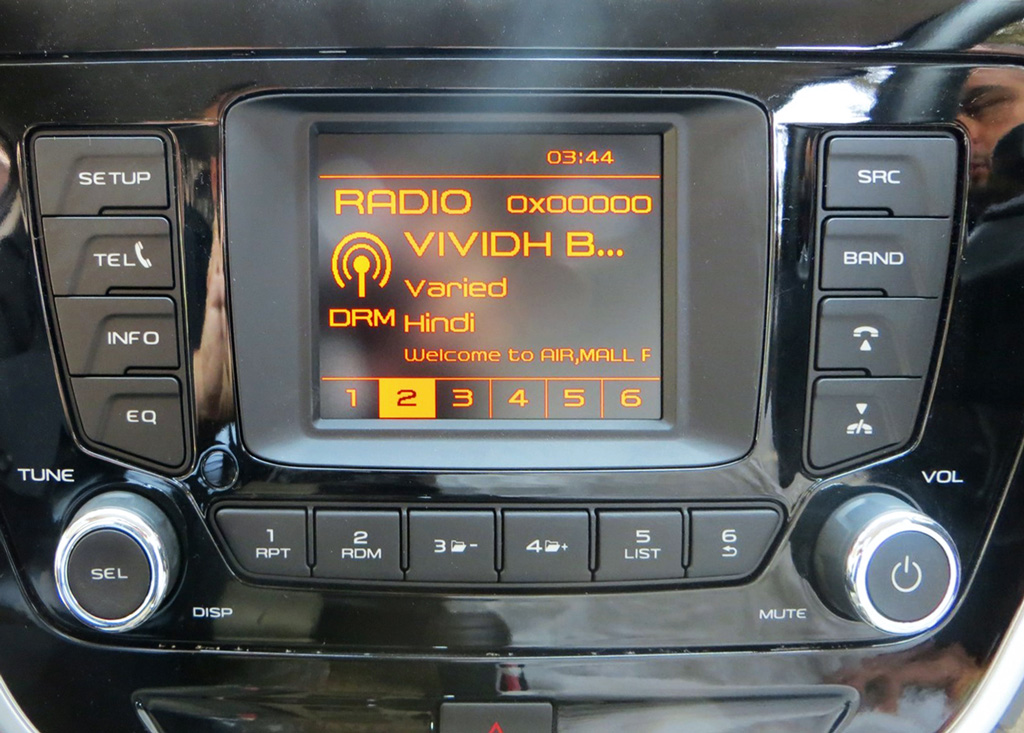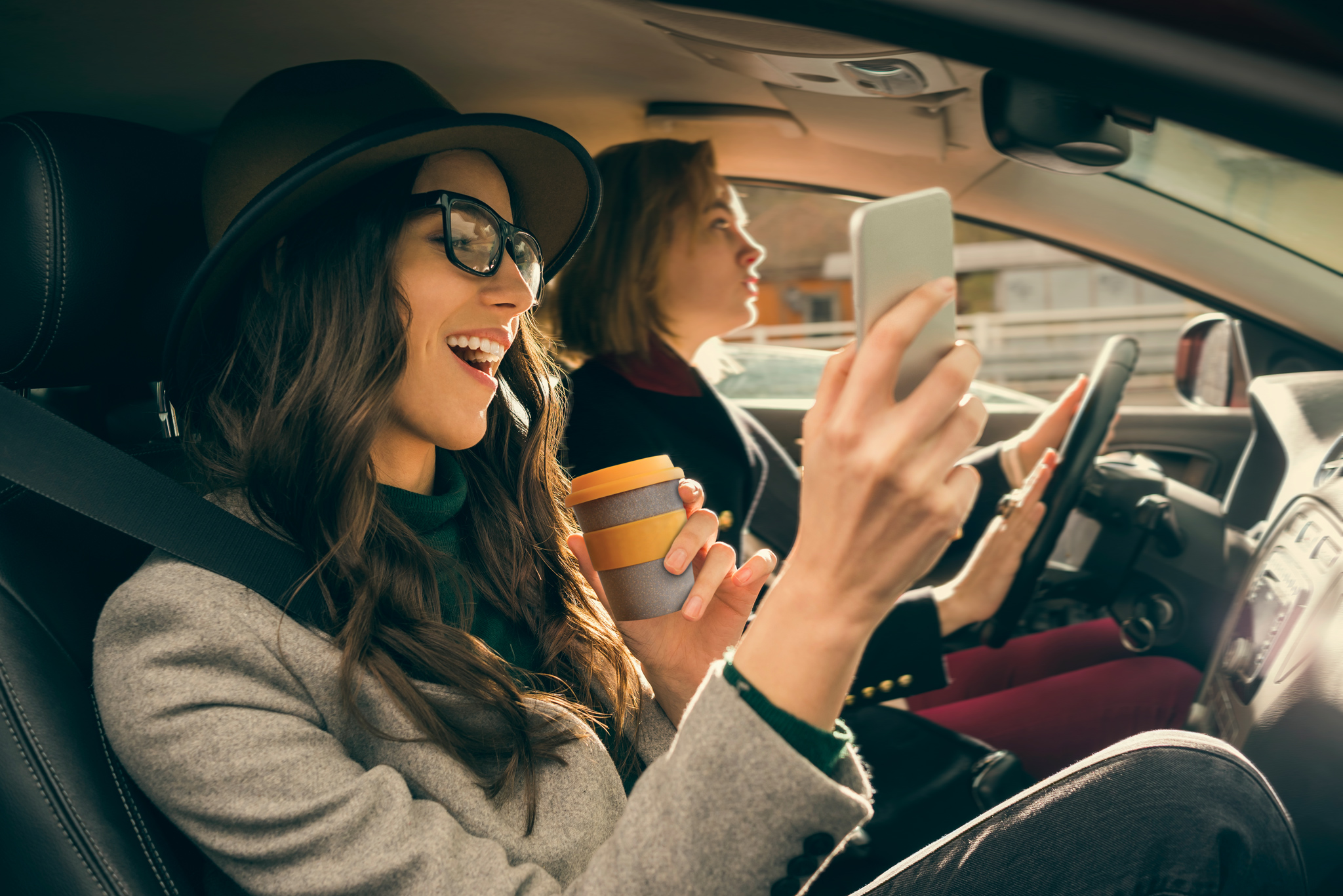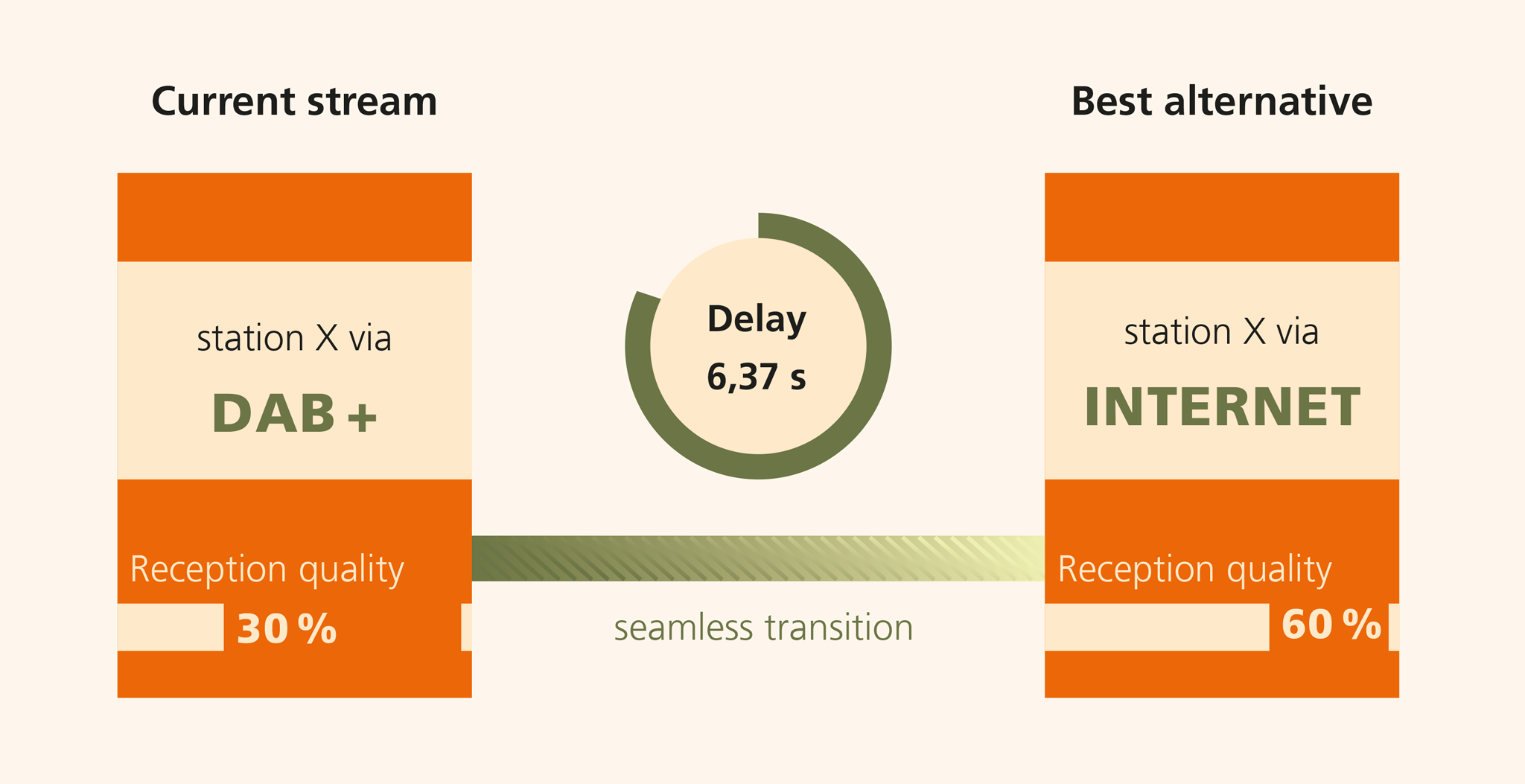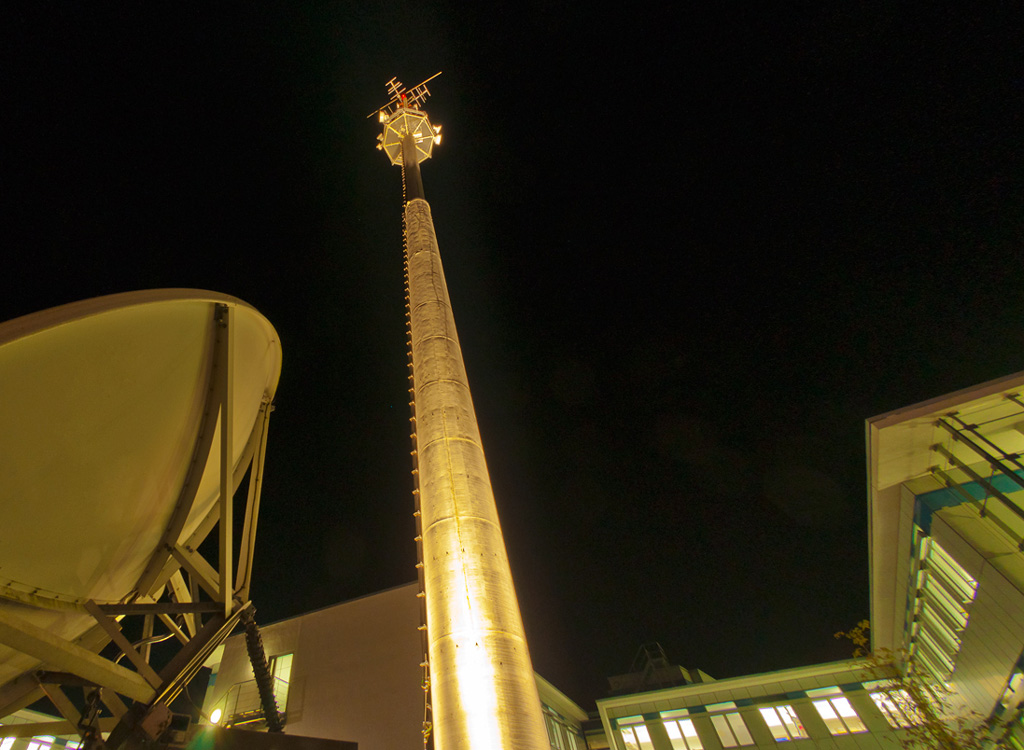Radio without Limits
Whether radio is played in the kitchen or in the car, the analog radio waves of traditional radio broadcasting are increasingly also being used for the transmission of digital signals. In addition to the now widely adopted digital radio systems such as Digital Audio Broadcasting (DAB+) and Digital Radio Mondiale (DRM), Internet capability is also increasingly being incorporated into radio receivers. These so-called hybrid radios allow users to receive Internet radio as well as FM and digital radio.
These devices are especially useful on the move, as they enable people to take their favorite local radio station with them wherever they go, even outside its broadcasting range. For example, if a Bavarian is driving in Berlin and wants to listen to a program from back home, the car radio automatically offers them the Internet livestream. Once back in Bavaria, the radio reverts to DAB+ or – when traveling in an area where the digital terrestrial signal cannot be received – FM.
Hybrid radio in your car
With their time-proven mix of information and entertainment, traditional radio programs will continue to be popular with drivers and passengers in future. A flexible use of the various transmission routes and technologies allows the vehicle entertainment system to meet people’s higher demands for greater quality and choice.
Car users can listen to their favorite radio station at all times. The radio seeks out the best source for this service. This can be digital radio, an Internet stream or even traditional FM radio. Modern radio platforms that use our radio software components are able to make this selection in the background and, if required, to switch from one source to another, so listeners scarcely even notice if the reception conditions in the moving vehicle change. The flexibility afforded by the use of software components also offers the option of configuring the same radio platforms for different markets or vehicle classes and of simply upgrading them in the future. You could almost say it was a radio app in the vehicle.
The audio program is supplemented by data services such as pictures, text notifications and further additional information that can be used via the specified receive paths. Here, hybrid radio combines the advantages of a radio system with the possibilities offered by an Internet connection.
»You could almost say it was a radio app in the vehicle.«
Seamless transitions
Compared to a radio signal’s reception, a web stream can have a delay of 20 seconds or more. When switching to the web stream, portions of the delayed feed are either lost or played twice; both of which are irritating to the listener. Fraunhofer Sonamic TimeScaling synchronizes both signals with each other to produce a precise, indistinguishable transition. This involves either delaying or accelerating the signal, so that an inaudible overlay is possible.
The process also works in reverse, when the system recognizes that the radio signal is strong enough again for good reception. This means it can seamlessly switch from the web stream to the radio signal while keeping the amount of mobile data used for Internet access to a minimum.
Ensuring high audio quality
Alongside additional services, radio stations primarily create and maintain audience loyalty by offering them listening pleasure. In digital and web radio, this means using the best audio codec, which has to deliver maximum quality at the lowest possible bit rates. For growing numbers of streaming services and for the DRM digital radio standard, the system of choice is the xHE-AAC (Extended High Efficiency AAC) codec.
This newest member of the AAC family unifies speech and audio coding for the first time. As a result, the range of usable stereo bit rates is expanded to between 12 kbit/s and up to 500 kbit/s or higher. xHE-AAC was developed specifically for adaptive streaming, and alongside MPEG-H Audio, it is the only codec that switches seamlessly between the available bit rates and quality levels. The audio bit rates required have been reduced by up to 50 percent compared to the predecessor HE-AAC codec while offering comparable quality.
Listening to your favorite station wherever you go
With hybrid radio, you can listen to your favorite station in your car even when you leave the broadcast range. In such cases, the radio broadcast is seamlessly combined with the corresponding Internet stream. Fraunhofer’s Sonamic TimeScaling technology delivers inaudible transitions. Fitted with SDR platforms, car radios have the technology required to receive web streams. In the future, operation of the radio receivers is to be simplified, so users will not even notice what path the radio program they are listening to is being transmitted on.
Hybrid radio in India

In India, for example, the world’s largest digital radio rollout is progressing well. The public service broadcaster All India Radio (AIR) is making the national terrestrial radio infrastructure fit for the future, to which end it is using the digital radio standard DRM. This standard is the only one that fulfills all requirements for the coverage of a huge country like India and guarantees the efficient and complete digitalization of radio, irre- spective of whether the programs are supposed to be receivable on a local or regional, a national or even international basis.
For a seamless transition from analog to digital radio, AIR is currently transmitting both analog and digital broadcasts simultaneously. The digital contents are encoded with the xHE-AAC codec standardized in DRM. As xHE-AAC is optimized equally for speech and music contents, it is no longer necessary to change the configuration of the digital radio according to the type of audio contents currently being broadcast.
In India, the automotive industry has really got behind DRM: at the start of May 2018, the number of cars fitted out with DRM radios exceeded 800,000. Almost all leading manufacturers have already integrated DRM into their vehicles, including Hyundai and Suzuki.
This means hybrid radio will continue to be an important technology in India in the future. Depending on the reception at a given time, the radio can then switch auto- matically between DRM and the station’s xHE-AAC livestream on the Internet, so as to ensure optimum quality and interruption-free radio enjoyment.


